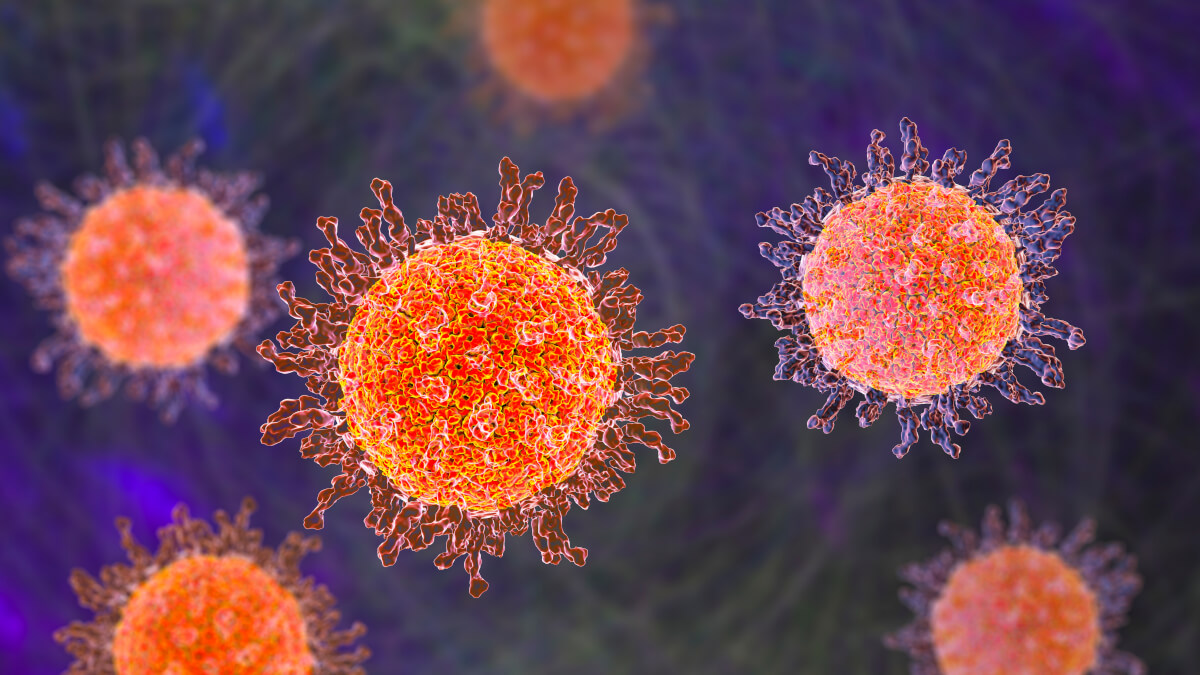
(© DOC RABE Media - stock.adobe.com)
SEATTLE — A revolutionary new treatment may forever get rid of the painful and embarrassing blisters that come from a herpes flare-up. The herpes viruses that cause either cold sores around the mouth or blisters near the genitals stick around for life, lying dormant in nerve cells only to reactivate and cause sores again down the road. However, scientists in Seattle believe gene editing may be the solution. Researchers at the Fred Hutchinson Cancer Center have taken a big step towards genetically zapping those viruses out of the body entirely.
In a new study published in the journal Nature Communications, scientists are reporting positive results from an experimental gene therapy that eliminated up to 97 percent of herpes virus infections in mice. The clever therapy works by injecting gene editing molecules into the bloodstream that can hunt down and destroy the DNA code of herpes hiding out in nerve clusters.
“Herpes is very sneaky. It hides out among nerve cells and then reawakens and causes painful skin blisters,” says Dr. Keith Jerome, a professor in the Vaccine and Infectious Disease Division at Fred Hutch, in a media release. “Our aim is to cure people of this infection, so that they don't have to live with the worry of outbreaks or of transmitting it to another person.”
Most people have been exposed to at least one of the two main herpes viruses, HSV-1 and HSV-2. Around two-thirds of people under 50 carry HSV-1, the virus that causes cold sores around the mouth, often spread through oral contact. About 13 percent have HSV-2, the culprit behind most genital herpes cases typically contracted through sexual transmission.
While herpes infections are usually more of an occasional nuisance than a serious health threat, they can have serious consequences. HSV-2 raises the risk of contracting HIV, the virus that causes AIDS. Some research has also linked HSV-1 to an increased risk of dementia later in life. Unfortunately, there's also a social stigma surrounding patients with herpes, as well as stress that outbreaks will eventually return.
“If you talk to people living with herpes, many are worried about whether their infection will transmit to others,” Jerome explains.

Existing antiviral medications can help reduce herpes outbreaks, but they don't get rid of the viruses completely. That's because herpes is what's known as a latent or persistent virus. Its DNA is able to integrate into the genomes of the human nerve cells it infects, staying put for life and randomly reactivating to cause more viral shedding and sores.
The new gene therapy aims to use molecular tools to surgically remove the herpes DNA from nerve cells in a highly precise way. Here's how it works:
The researchers injected into the bloodstream a mixture of gene editing components packaged inside a modified virus shell. This virus shell, called a vector, can penetrate into cells and deposit its cargo. The cargo contains gene editing enzymes called meganucleases, which act like molecular scissors.
Once the vectors reach the nerve cell clusters harboring the latent herpes viruses, the molecular scissors get to work. They literally “snip away” at two different spots in the herpes genetic code, cutting it up so badly that it becomes corrupted beyond repair. The body's cellular repair systems then recognize the mangled viral DNA as a foreign object and destroy it.
“We are using a meganuclease enzyme that cuts in two different places in the herpes virus's DNA,” says study co-author Dr. Martine Aubert. “These cuts damage the virus so much that it can't repair itself. Then the body's own repair systems recognize the damaged DNA as foreign and get rid of it.”
In mice infected with the HSV-1 strain, a single treatment with the gene therapy eliminated over 90 percent of the virus from nerves involved in oral herpes and 97 percent from those linked to genital herpes after about a month. Even better, it also dramatically reduced the amount of infectious virus particles being shed from nerves, which is key for stopping it from passing to another person through skin-on-skin contact.
“Our new study shows that we can reduce both the amount of virus within the body and how much virus is shed,” Jerome says.
The researchers have steadily improved and simplified the gene therapy too. Earlier versions required multiple editing enzymes, while this latest iteration uses just one vector and one meganuclease that cuts the viral DNA in two spots.
“Our streamlined gene editing approach is effective at eliminating the herpes virus and has less side effects to the liver and nerves,” Jerome continues. “This suggests that the therapy will be safer for people and easier to make, since it has fewer ingredients.”
Turning this gene editing approach into an approved treatment for humans will take more time and research, including clinical trials. The team is also working to adapt it for HSV-2 infections. However, they're still excited that a cure could be on the horizon after decades of fruitless efforts.
“We're collaborating with numerous partners as we approach clinical trials so we align with federal regulators to ensure safety and effectiveness of the gene therapy,” Jerome concludes. “We deeply appreciate the support of herpes advocates as they share our vision for curing this infection.”
The researchers received funding from the National Institutes of Health, the Caladan Foundation, and more than 2,000 donors. The meganucleases used in this research are derivatives of commercially-available meganucleases.










